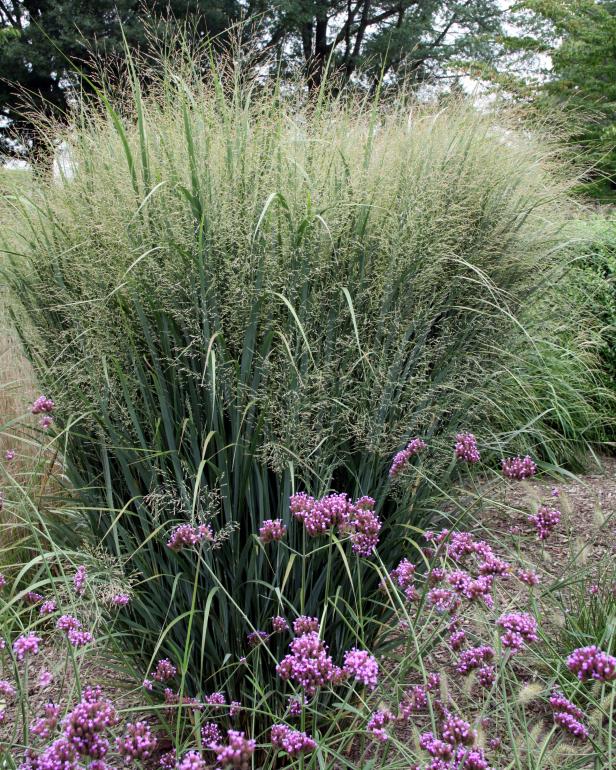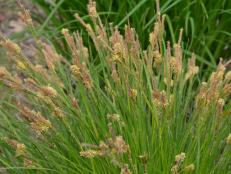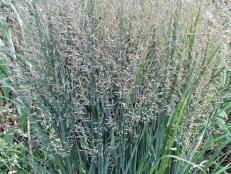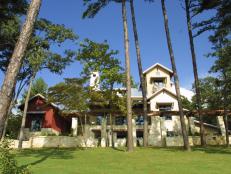Our Favorite Ornamental Grasses
Add some of these go-with-the-flow grasses to your garden for extra interest throughout the growing season.


Image courtesy of Perennial Plant Association/National Garden Bureau
Not all grasses belong in the lawn. Some make graceful additions to your landscape, adding color, texture and a sense of movement and sound as they toss and rustle in the wind. They’re also great for adding vertical lines and contrast to your garden, especially when used as a backdrop for flowering plants.
Many ornamental grasses also produce stunning seed heads in the fall. Some birds will feast on the seeds as they ripen, but you can also leave the flower stalks on the plants for winter interest, or cut them to bring inside for dried arrangements.
Here are a few of our favorite ornamental grasses:
Dwarf Fountain Grass - Pennisetum alopecuroides 'Little Bunny'–This charmer is a dwarf fountain grass with fluffy-as-a-bunny’s-tail, whitish-green flowers that appear from late summer to early fall. In autumn, the foliage turns reddish-gold. Although ‘Little Bunny’ is drought tolerant, the plants, which are hardy in zones 5 to 9, also grow in wet soils and can be used even in rain gardens. Give them full sun to part shade and depend on them for three-season interest. They need little care and are great for rock gardens, containers and slopes where erosion is a problem.
Ornamental Millet – Pennisetum glaucum 'Purple Majesty' - An All-Americans Selection Gold Medal Winner from 2003, this millet was developed from the millet that’s eaten in parts of Asia and Africa. Its corn-like leaves age from green to dark purple, topped by purple flower plumes that resemble cattails. For the best color, grow these annual plants, which reach 3 to 5 feet high, in full sun. They’ll tolerate heat and drought, and they’re beautiful in containers, as specimen plants or in masses. Cut the seed spikes for arrangements, or let them dry in the garden so wild birds can feast on the seeds.
Miscanthus – Miscanthus-A low-maintenance perennial that’s hardy in zones 4-9, miscanthus is a favorite with gardeners. Topping out at 20 feet high and 2 to 5 feet wide, it makes an excellent privacy screen or border. Give it part to full sun, moist sun and good drainage, and watch for summertime flower plumes that dry and last through the winter. Miscanthus ‘Morning Light’ is especially beautiful when its slender, silvery-green leaves are backlit by the sun, and it’s less likely to fall or flop over than some cultivars. Try it for a natural look around a garden pond or in a meadow or cottage garden.
Mexican Feather Grass – Nassella tenuissima-Grow this handsome grass on a hill or slope to help control erosion, or in a meadow where it can re-seed freely. Its delicate, bright green leaves and feathery, light green flowers almost shimmer in the breeze. By fall, the flowers mature to golden brown. The plants are drought tolerant and need well-draining soil. They grow to 2 feet high and behave as a perennial where winter temperatures don’t drop below 20 degrees F. Give the plants full to part sun and use them in the landscape or containers.
Northern Sea Oats, also called Spangle Grass and Wild Oats – Chasmanthium latifolium — Spangle grass is hardy in zones 3-9. While you can grow the plants in masses, they’re equally appealing as specimen plants. Flowers appear in June to September and form flattened, green seed heads that rustle when the wind blows. By fall, the seed heads turn bronze and the medium-green foliage turns yellow. Give this grass fertile, moist soil (although it can take some drought), and full sun to shade. Since it grows from seeds and rhizomes, it can become invasive if not kept in check.
Purple Fountain Grass – Pennisetum setaceum ‘Rubrum’ – Add rich color to your garden with this bronze-purple to black-purple grass. Pink flowers open in summer through fall and are followed by burgundy seed heads. The plants grow to 3 feet in part sun to sun, and are hardy to 20 degrees F. If you live where the winter temperatures are relatively mild, you can mow the grass to the ground after the leaves turn brown in fall, and new leaves will sprout the following spring. Otherwise, let the dried flower stalks remain for winter interest. (Remove them, however, if there’s any danger of fire where you live.) The soft plumes are beautiful in fresh or dried arrangements.
Little Bluestem – Schizachyrium scoparium - Once found on the tall grass prairie, this perennial grass, which is hardy in zones 2 to 7, has fine, green leaves with a blue tint at the base. In autumn, the foliage turns bronze or rust-colored. Watch for the purple-bronze flowers to open on arching stems in late summer. Later, silvery-white seed heads form. Give the plants full sun. They typically grow 2 to 4 feet tall, making them a good addition for a cottage garden, a native planting or a border.
Switch Grass – Panicum virgatum – This tall, trouble-free grass produces clumps of medium-green leaves topped by pinkish flowers starting in late summer. By fall, the flowers turn beige and the leaves become yellow-beige, sometimes with a hint of orange. Give the plants full sun to part shade and medium amounts of water; ‘Northwind’ is a lovely cultivar that grows to almost 6 feet, with bluish-green foliage and yellow flowers that turn beige as they mature. It’s tolerant of both dry and wet soils. Use it for erosion control, winter interest and in perennial borders, meadows and other naturalized areas.












































